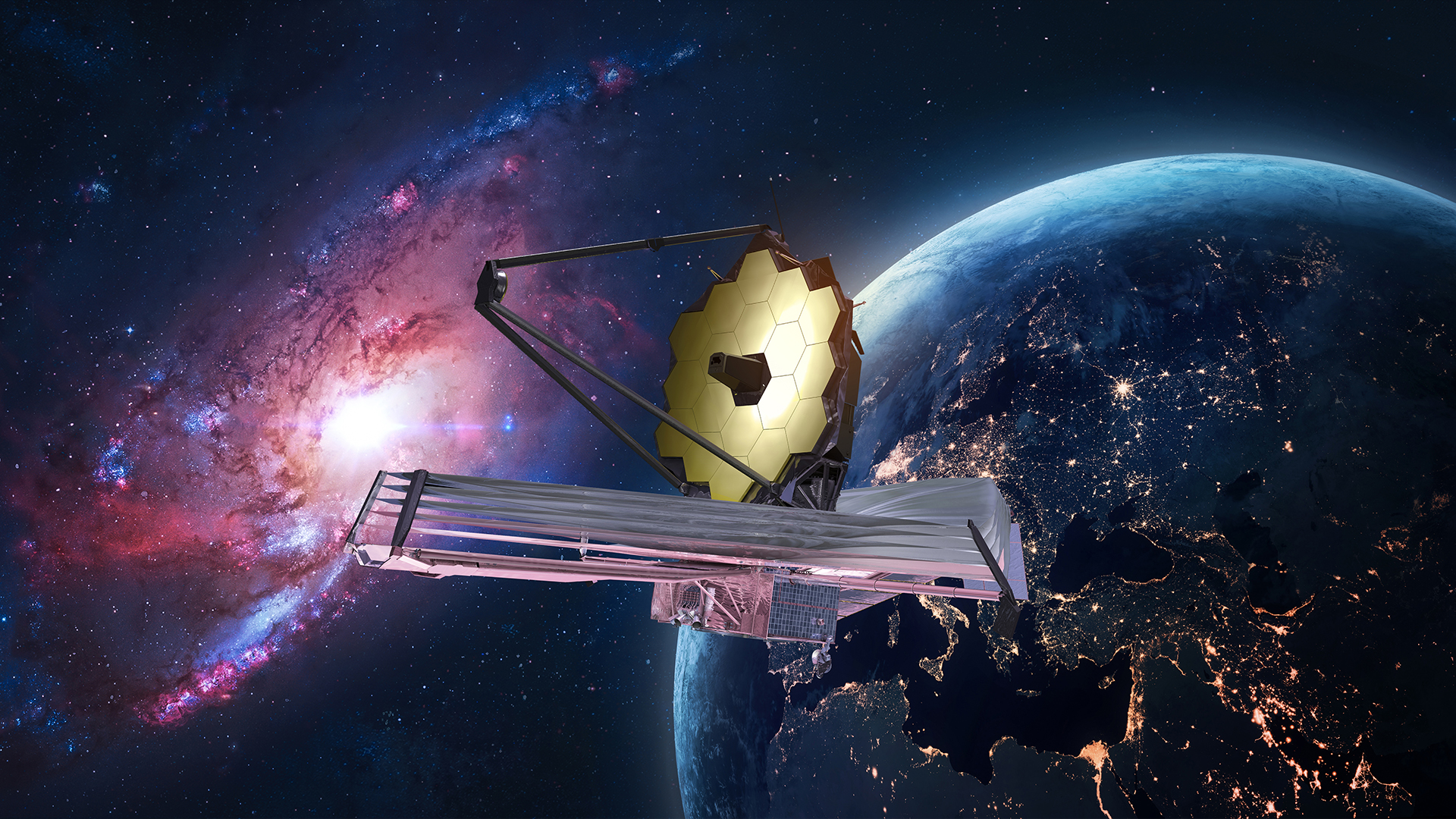Has the James Webb Telescope found extraterrestrial life on K2-18b? This may very well be the case.
The James Webb Space Telescope (JWST) has achieved an unprecedented milestone in the exploration of the universe. As scientists reveal, this innovative instrument has detected signs of life on a distant exoplanet , generating great excitement in the scientific community and fueling the debate about the possibility of extraterrestrial life.
The power of the James Webb Space Telescope
Since its launch in 2021, the James Webb Space Telescope has been extensively exploring the universe with the goal of understanding the formation of the early universe and examining the atmospheres of nearby exoplanets. Its main focus includes the search for biosignatures , gases produced by living organisms, and technological signatures, chemical compounds that could be created by advanced alien civilizations.

An innovative study
In an effort to evaluate the telescope’s ability to detect intelligent life, researchers conducted a study simulating observations of Earth, our only known habitable planet. Deliberately altering the data to mimic observations from a considerable distance, they used a computer model to evaluate JWST’s ability to detect biosignatures such as methane, oxygen, nitrogen dioxide and chlorofluorocarbons.
Exoplanet K218b: A promising world
During this study, scientists identified the exoplanet K218b , located approximately 120 light years from our solar system. This world is distinguished by having a hydrogen-rich atmosphere and an ocean of liquid water. When observing its atmosphere, the James Webb Space Telescope detected carbon dioxide and methane, generating great excitement.
The key discovery: Dimethyl
However, the highlight was the identification of dimethyl , a molecule found on Earth. This fact is notable because on our planet, said molecule is produced as a byproduct of life , especially by microscopic plant-like organisms called phytoplankton in marine environments. This discovery represents a feature never before detected on an exoplanet.
The importance of worlds with warm water and hydrogen-rich atmospheres has grown in the context of the search for alien life, as they offer more conducive conditions for atmospheric observations. While scientists are collecting additional data to confirm the presence of dimethyl in K218b, these findings expand the range of possible candidates for the existence of extraterrestrial life.
Cautions and challenges
However, even if the presence of dimethyl on K218b is confirmed, we cannot affirm with certainty the existence of life on this distant planet. This matter becomes complicated for several reasons, mainly because our study is mainly based on our knowledge of the terrestrial environment.
An additional challenge is that biosignatures can have different origins, not exclusively linked to living organisms. For example, oxygen, although produced through photosynthesis by plants and algae on Earth, on other planets may derive exclusively from geological processes or even from the decomposition of oxygen-containing minerals as a result of chemical reactions.
Advances in the search for extraterrestrial life
Despite the challenges, we are making progress in the search for extraterrestrial life. Initially, our focus was on searching for planets similar in size to Earth, but we have expanded our criteria to include the habitable zone that allows the existence of liquid water. Today, we are delving even deeper into the chemical composition of exoplanets.
Thanks to technological advances, we are now able to detect alien biosignatures through atmospheric spectroscopy. Scientists are exploring new methods to identify biomarkers on exoplanets, which could provide information about alien life forms that may exist on them.
Study of purple bacteria: A clue to extraterrestrial life
In a recent study, scientists analyzed the Earth’s Archean, an era inhabited by a variety of primitive life forms such as purple bacteria. Several models were created to determine whether the widespread existence of such organisms would influence the appearance of Earth from a distance.
The simulations considered various variables such as the abundance and distribution of bacteria in aquatic and terrestrial environments, as well as the presence and density of clouds in the atmosphere. The results of this study were exciting, as purple bacteria showed a special way of reflecting light, standing out in a specific range of colors similar to the “red edge” phenomenon observed in leafy plants.
In the search for extraterrestrial life, the presence of purple bacteria in the inner regions of an exoplanet whose skies are not significantly covered by clouds could be detected using specific optical filters.
Other exciting discoveries from the James Webb Space Telescope
The James Webb Space Telescope has made many exciting discoveries lately, sparking debate and controversy. Prominent among these is the fact that our Universe is expanding, countering the previous belief that the expansion would slow down due to gravity.
The explanation for this phenomenon involves the existence of two elusive entities: dark matter and dark energy. Dark matter, which makes up 27% of the universe, acts as an imperceptible substance in space, playing a crucial role in the cohesion of galaxies and galaxy clusters. Although it does not interact with ordinary matter or emit light, scientists can analyze it through its gravitational effects.
On the other hand, dark energy, constituting approximately 68% of the universe, remains responsible for the accelerated expansion of the cosmos. Although dark matter and dark energy are invisible and intangible, their presence is revealed by examining the patterns and movements of galaxies.
Conclusion
The James Webb Space Telescope has made unprecedented progress in detecting signs of life on a distant exoplanet. Although more research is still needed to confirm these findings, this discovery opens new doors in the search for extraterrestrial life and brings us one step closer to unraveling the mysteries of the universe.





